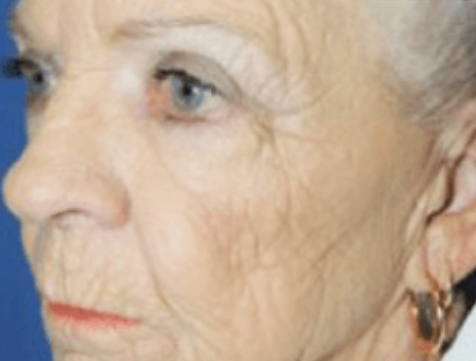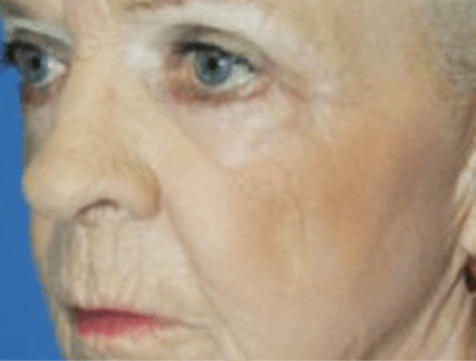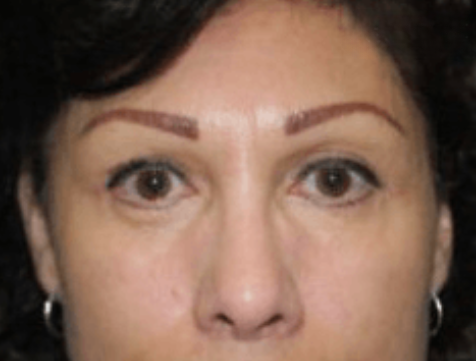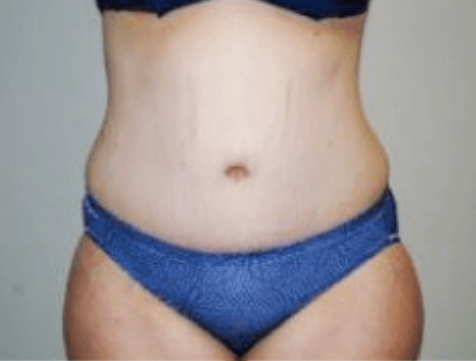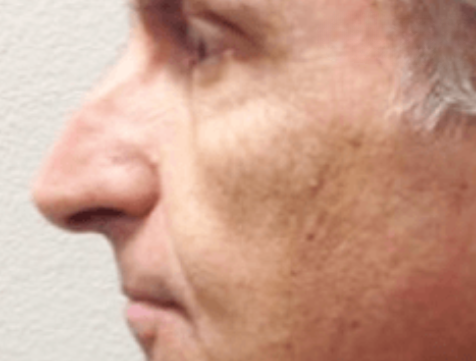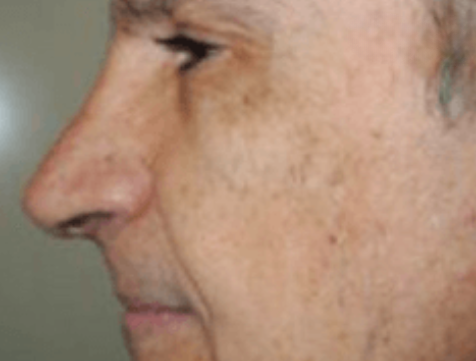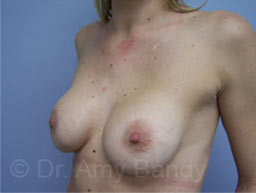Breast Implant Exchange
Conveniently located to serve the areas of Newport Beach, CA

Over time, some women need to have adjustments made to their breasts after their augmentation procedure. Dr. Bandy is experienced in treating such patients, often referred to her from other physicians and surgeons. On occasion a saline-filled implant may leak and deflate. This can be treated with simply an implant exchange procedure. In some instances, women may need to have silicone implants removed and replaced. For the rare patient that develops severe scar tissue around their implants, the scar tissue can be removed and the implants replaced. Other issues, such as unsatisfactory implant position or size, can often be improved with revisional surgery. In most cases, the corrective procedure can be performed through the old small scar created from your original augmentation procedure. If you have had breast augmentation, but now have problems or don’t like your look, then a revisionary procedure may be the solution to give you the look you desire. Learn more about Breast Implant Exchange at our Newport Beach, Orange County office.
Schedule A ConsultationContents
- 1 Before and After Photos
- 2 Who is Breast Implant Exchange recommended for?
- 3 Pre-operation
- 4 Post-operation
- 5 Costs
- 6 Recovery
- 7 FAQ
- 7.1 Q: What is the difference between silicone and saline implants?
- 7.2 Q: Should I choose silicone or saline implants?
- 7.3 Q: How long does a breast implant exchange procedure take?
- 7.4 Q: Should the breast implant be placed in front of the muscle or behind the muscle?
- 7.5 Q: What type of breast implant exchange incisions does Dr. Bandy perform?
- 7.6 Q: What are breast implant exchange complications and possible patient complaints?
- 7.7 Q: What if I experience any complications?
Before and After Photos
Who is Breast Implant Exchange recommended for?
Over time, some women need to have adjustments made to their breasts after their augmentation procedure. Dr. Bandy is experienced in treating such patients, often referred to her from other physicians and surgeons. On occasion a saline-filled implant may leak and deflate. This can be treated with simply an implant exchange procedure. In some instances, women may need to have silicone implants removed and replaced. For the rare patient that develops severe scar tissue around their implants, the scar tissue can be removed and the implants replaced. Other issues, such as unsatisfactory implant position or size, can often be improved with revisional surgery. In most cases, the corrective procedure can be performed through the old small scar created from your original augmentation procedure. If you have had breast augmentation, but now have problems or don’t like your look, then a revisionary procedure may be the solution to give you the look you desire.
Pre-operation
How can I prepare?
A patient can prepare for a breast augmentation procedure by getting on a good diet and beginning a vitamin protocol (provided by Dr. Bandy) to aid their body in healing. We recommend accomplishing all house chores prior to surgery that would require a patient to lift anything over 5 pounds or push or pull anything heavy. During your pre-operative appointment our nurses will go over all necessary steps to prepare for your surgery.
Will anesthesia be administered?
Depending on the extent of the capsule and the amount of work that needs to be performed, the surgery may be performed under a local or general anesthetic. Most patients elect to have the surgery under a general anesthetic.
Is painful?
Following the procedure patients will be prescribed pain medication in order to minimize discomfort.
What if I am sick before?
If a patient is noted to be sick prior to a procedure, it is advised to contact Dr. Bandy’s office immediately to discuss the best way to move forward.
How long before I see results?
Results of breast implant exchange can be seen immediately, however, it takes 4-6 weeks or longer until the swelling decreases.
Post-operation
Is scarring expected after?
The incision for a breast implant removal is typically performed through the same incision the implants were initially placed through, therefore no new incision is typically created.
Can I drive home after?
It is always recommended to have someone assist you in getting home or to your recovery center. If a patient has surgery under general anesthesia, they will need a driver over 18 years old to drive them home. If the procedure is performed under local anesthesia, it is possible that the patient may drive home, although not recommended.
Should I try avoiding touching the area after?
After surgery it is advised to avoid the incision area. Massaging the breasts following surgery is not required.
What activity should I refrain from after?
We advise patients refrain from strenuous activity for at least 3 weeks, and avoid lifting anything heavier than 15 lbs for 4 weeks after surgery. A more detailed recovery estimate will be discussed during a consultation when more patient information is received. Specific recovery instructions are provided in the pre-op and post-op periods depending on how the patient is healing.
Do I need to take any medication after?
A patient is usually prescribed an antibiotic and a pain medication. If a patient is undergoing a general anesthesia, sometimes they are prescribed an anti-nausea medication to combat any feelings of nausea that some patients experience after having a general anesthesia.
Costs
What is the average cost?
Breast Implant Exchange costs depend on a number of factors such as implant manufacturer, complexity of the case, surgeons fees, etc.
Learn About Breast Implant Exchange Cost
Are there financing options?
The patient has multiple financing options. For example, the patient can pay for the surgery on credit card, and make monthly payments back to their credit card. Additionally, CareCredit is a financing company specific for cosmetic surgery; patients can apply for CareCredit, and there are multiple options for CareCredit. Sometimes, patients opt to make payments directly to the office. This is a prepayment plan where a patient would pay until he or she pays the entire balance for the surgery; then, they would have their surgery.
Recovery
What is the recovery time and the healing process?
A breast implant exchange is described by most patients as being less painful than their original augmentation. Following surgery, a patient’s pain will be minimal as Dr. Bandy injects a long lasting local anesthetic that will reduce pain experienced due to the newly formed pockets that the implants will now sit within. A patient will still experience discomfort often described as “pressure” or “heaviness” to their chest that is caused by the pressure on the muscle. The intensity of this feeling will last for approximately 2-3 days. After the local anesthetic wears off, the pain will become more noticeable and will last for 2-3 days and will gradually reduce to a dull discomfort when the arms or certain body movement are made. Recovery times vary and are dependent on a patient’s normal daily activities and what they physically do on the job. Most patients will be extremely sore for three days after surgery and are typically advised to take about 3-5 days off of work as a result. We advise patients refrain from strenuous activity for at least 3 weeks, and avoid lifting anything heavier than 15 lbs for 4 weeks after surgery. A more detailed recovery estimate will be discussed during a consultation when more patient information is received. Specific recovery instructions are provided in the pre-op and post-op periods depending on how the patient is healing.
Is there a post-operative recovery facility that you recommend?
We do have a post operative recovery facility that we refer our patients to in Orange County, CA and Los Angeles, CA. In these situations, they will be picked up by the post operative care facility from our recovery room and brought to the recovery center where they are recovered overnight, and then brought back the next day for their follow up appointment.
FAQ
Q: What is the difference between silicone and saline implants?
A: A patient may choose to either have a saline filled implant or a silicone filled implant, both of which are FDA approved.Saline: Having been on the market for over 20 years, saline has always been a strong choice for patients choosing to have a breast augmentation procedure. With further advances in research and development, current saline implants have proven to be strong and durable. If there is ever a rupture or defect to the implant the saline will be absorbed and expelled from the body naturally and a patient would be left with the same volume of breast tissue that they had prior to their augmentation. In thin patients with minimal breast tissue, a firmer look and feel as well as noticeable rippling to the implant can occur as the skin surrounding the implant takes on the shape of the implant and the tissues settle over time. As time progresses or when a person loses weight, rippling can become more obvious due to skin stretching and thinning, thus making ripples noticeable that were previously not seen.Silicone: Silicone has definitely become more popular with further advances in research and development and is the implant of choice for most thin patients who are looking for a natural softer breast with less chance of seeing or feeling rippling. In Dr. Bandy’s practice, 80 percent of patients choose to have silicone implants. Patients rave that their breasts look and feel “so natural”. In the 1980’s silicone had the same consistency as honey and was very sticky if the implant ruptured. Silicone is not absorbable by the body the same way saline is. The FDA halted manufacturing of this form of silicone to investigate the safety of silicone gel implants. At that time, patients were left with only the option of saline implants for several years. In 2003, the FDA lifted its ban on silicone as ‘cohesive gel’ silicone implants were unveiled and the studies showed that the safety margin of silicone gel implants are parallel with saline. This form of silicone has the same consistency as a gelatin. The cohesive gel silicone is still within a solid silicone shell which acts as a strong and durable restraint against pressure or ruptures. Although women have their choice of saline or silicone implants, at this time the FDA has approved the use of silicone implants for women 22 years of age or older unless certain reconstructive guidelines are met.
Q: Should I choose silicone or saline implants?
A: Depending on the look and feel the patient desires depends on which implant would be recommended. Saline implants typically produce more upper-pole fullness, whereas silicone implants can create a more natural appearance. Dr. Bandy also offers patients different types of “cohesiveness” of silicone implants. By choosing a more cohesive silicone implant, the implant maintains it’s shape more when implanted and provides more fullness in the upper pole (similar to saline) but with the feel of silicone. During your consultation our office will go over all implant options and make recommendations based upon a patient’s desired outcome.
Q: How long does a breast implant exchange procedure take?
A: A breast implant exchange typically takes 1-2 hours, depending on it any capsule work is being performed.
Q: Should the breast implant be placed in front of the muscle or behind the muscle?
A: When consulting with a surgeon it is important to discuss your implant placement. There are two placement techniques that are used most for breast augmentation and a third placement that is used for varying circumstances. More commonly women choose implant placement behind the pectoral muscle. There are several reasons that a woman might choose to have her implant placed behind the muscle. After a breast augmentation a woman will be able to receive much more accurate readings from a mammogram if the implant is placed behind the muscle as this allows for the woman’s natural breast tissue to stay in front of the implant and muscle. Also, if the implant is placed behind the muscle, the muscle acts as an internal support for the implant. Implants placed in front of the muscle will only have natural breast tissue and skin in front of the implant. Because skin and breast tissue do not have elastic recoil, the breast will stretch over time. For a woman that does not have a lot of natural breast tissue (A-B cups), implant placement behind the muscle might be a good choice as the muscle gives more coverage to the implant and helps create a natural look and natural slope. A third option is called the ‘dual plane’ implant placement. This means that the implant is placed behind the muscle and the upper 2/3 of the implant is fully supported by the pectoral muscle, however, the bottom 1/3 of the implant is allowed to settle into the bottom of the breast by releasing muscle fibers from the connecting bone. This is typically for women who have more of a bottom pole fullness naturally or are on the fence of having a breast lift. An experienced and skilled surgeon such as Dr. Bandy will be able to explain which implant placement is recommended for your own individual needs.
Q: What type of breast implant exchange incisions does Dr. Bandy perform?
A: Typically Dr. Bandy will use the original incision for the implant exchange is possible. If not, Dr. Bandy recommends making her incision in one of three ways. The first is through the areola on the area where the areola meets with the lighter skin on the breast. An incision here makes for a well hidden and blended scar. Many women like this incision because if their scar heals dark, the color will match that similar of their areola and if their scar heals light, the color will match closer to that of the lighter natural breast color. Although a very popular incision site, this incision carries a slightly higher risk for loss of nipple sensitivity- this decrease in sensitivity is usually temporary but sensation may never fully recover. This incision not only cuts through skin, but continues through the breast tissue. The second incision is in the infra-mammary fold. This is under the breast in the natural fold of the breast. (Don’t worry, if you don’t have a natural fold, you will after an augmentation.) This incision allows for a nicely hidden scar and comes with a lowered risk for loss of nipple sensitivity. The third incision is the transaxillary incision which is located in the highest crease in the armpit. This makes for a well hidden scar as well and also carries a lowered risk for loss of nipple sensitivity. Women may choose to implant both saline and silicone implants in any of the incision sites, however, with the transaxillary incision, due to pressure placed on an implant, the maximum size of a silicone implant to be implanted through this incision is reduced.
Q: What are breast implant exchange complications and possible patient complaints?
A: With any surgery or procedure there is a risk for complications. Breast augmentation is no different, with possible post surgical complications ranging from post operative bleeding (hematoma) and fluid collection that would require drainage (seroma) to implant rippling and capsular contracture. Although rare, there is always a chance for a patient to form a hematoma which would be noticeable within the first 72 hours after surgery. Although preventable in the operating room with an experienced surgeon, a hematoma can form post-operatively by a surge in a patient’s blood pressure or a patient over exerting themselves and tearing any sutures previously placed. This is why it is imperative for all health complications or risks to be evaluated and under control prior to surgery, as well as ensuring that a patient is made aware of and understands all post operative care instructions and guidelines. Patients can also complain of noticeable implant rippling. Implant rippling, although more prevalent in saline implants, is sometimes unavoidable. Choosing an appropriate implant size that does not go outside of the patient’s own tissue boundaries, and placement behind the muscle reduces the risk of rippling. However, rippling can still occur despite these measures, and there is no definitive way to determine if a patient will experience rippling of the implants. Implant type, size, material and placement are all contributing factors to rippling and it is important to discuss each factor individually with Dr. Bandy during a consultation and pre-operative appointment. The most common complaint heard is that many patients wish that they had gone with a larger size implant. But all in all, patients love the way they look and feel with their fuller, more youthful breasts.
Q: What if I experience any complications?
A: If a patient experiences any complications, it is requested that the patient contact our office immediately to discuss how to move forward.
